Chris Bing and Joel Schectman at Reuters:
 At the height of the COVID-19 pandemic, the U.S. military launched a secret campaign to counter what it perceived as China’s growing influence in the Philippines, a nation hit especially hard by the deadly virus.
At the height of the COVID-19 pandemic, the U.S. military launched a secret campaign to counter what it perceived as China’s growing influence in the Philippines, a nation hit especially hard by the deadly virus.
The clandestine operation has not been previously reported. It aimed to sow doubt about the safety and efficacy of vaccines and other life-saving aid that was being supplied by China, a Reuters investigation found. Through phony internet accounts meant to impersonate Filipinos, the military’s propaganda efforts morphed into an anti-vax campaign. Social media posts decried the quality of face masks, test kits and the first vaccine that would become available in the Philippines – China’s Sinovac inoculation.
Reuters identified at least 300 accounts on X, formerly Twitter, that matched descriptions shared by former U.S. military officials familiar with the Philippines operation.
More here.

 Despite its growing popularity among Anglophone readers, the crónica—a unique form of literary reportage that blurs the lines of fact and fiction—remains a quintessentially Latin American genre. In English, scant studies on the form exist beyond 2002’s
Despite its growing popularity among Anglophone readers, the crónica—a unique form of literary reportage that blurs the lines of fact and fiction—remains a quintessentially Latin American genre. In English, scant studies on the form exist beyond 2002’s  LO. LEE. TA. This is the trip the tip of the tongue expects to take when reading a novel from the point of view of a man currently incarcerated following the rape of a teenage girl he’s groomed. And at the tender age of thirteen pages into Lucas Rijneveld’s My Heavenly Favorite, an attentive reader may indeed murmur “Lolita!” when the unnamed narrator, a former farm veterinarian from the Dutch countryside, refers to the titular “favorite,” also unnamed, as “the fire of my loins.” So far, so Lo.
LO. LEE. TA. This is the trip the tip of the tongue expects to take when reading a novel from the point of view of a man currently incarcerated following the rape of a teenage girl he’s groomed. And at the tender age of thirteen pages into Lucas Rijneveld’s My Heavenly Favorite, an attentive reader may indeed murmur “Lolita!” when the unnamed narrator, a former farm veterinarian from the Dutch countryside, refers to the titular “favorite,” also unnamed, as “the fire of my loins.” So far, so Lo. While the Fourth of July conjures up images of fireworks and parades, barbecues and bonfires, the United States has another Independence Day tradition: naturalizing new citizens. An estimated 11,000 people will celebrate the holiday this year by officially becoming American citizens, double the number from 2023.
While the Fourth of July conjures up images of fireworks and parades, barbecues and bonfires, the United States has another Independence Day tradition: naturalizing new citizens. An estimated 11,000 people will celebrate the holiday this year by officially becoming American citizens, double the number from 2023.  Artificial intelligence systems can now create remarkably accurate reconstructions of what someone is looking at based on recordings of their brain activity. These reconstructed images are greatly improved when the AI learns which parts of the brain to pay attention to. “As far as I know, these are the closest, most accurate reconstructions,” says
Artificial intelligence systems can now create remarkably accurate reconstructions of what someone is looking at based on recordings of their brain activity. These reconstructed images are greatly improved when the AI learns which parts of the brain to pay attention to. “As far as I know, these are the closest, most accurate reconstructions,” says 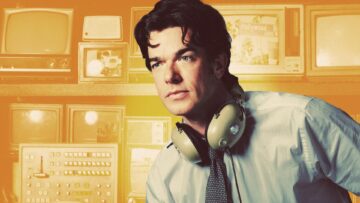 DESPITE ITS HOST’S supremely confident stage persona, John Mulaney Presents: Everybody’s in L.A. starts out self-conscious. In his opening monologue, Mulaney explains that he doesn’t really understand the point of the show and assures the audience that, with only six episodes streamed live and nightly on Netflix, it “will never hit its groove.” He’s right to worry. With everything from traditional call-in segments and monologues to chaotic guest cross talk to a robot-based running gag and semi-real, semi-staged portraits of Los Angeles, the show is a chaotic mix of disparate comedic modes that constantly dares itself not to work.
DESPITE ITS HOST’S supremely confident stage persona, John Mulaney Presents: Everybody’s in L.A. starts out self-conscious. In his opening monologue, Mulaney explains that he doesn’t really understand the point of the show and assures the audience that, with only six episodes streamed live and nightly on Netflix, it “will never hit its groove.” He’s right to worry. With everything from traditional call-in segments and monologues to chaotic guest cross talk to a robot-based running gag and semi-real, semi-staged portraits of Los Angeles, the show is a chaotic mix of disparate comedic modes that constantly dares itself not to work. Between 1945 and 1960, RAND operated as the world’s most productive research organization. Initially envisioned as a research arm of the Air Force, RAND made century-defining breakthroughs both in basic science and applied strategic analysis. Its members helped define U.S.
Between 1945 and 1960, RAND operated as the world’s most productive research organization. Initially envisioned as a research arm of the Air Force, RAND made century-defining breakthroughs both in basic science and applied strategic analysis. Its members helped define U.S.  J
J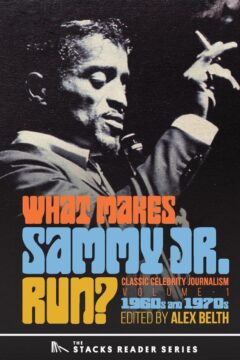 Editor Alex Belth has created an unusual literary anthology of some of the best celebrity magazine profiles from 1959 to 1979, what is generally regarded—at least by publishing old-timers—as the peak years of the genre, before the ferret-faced publicists cracked down on honesty and budgets ran dry. What Makes Sammy Jr. Run? Classic Celebrity Journalism Volume 1 (1960s and 1970s), published by the Sager Group this spring, puts 18 long-form stories about well-known actors, writers, and musicians into one place. The result is like a walk through a delightful museum of postwar America, with all its bright spots and faults.
Editor Alex Belth has created an unusual literary anthology of some of the best celebrity magazine profiles from 1959 to 1979, what is generally regarded—at least by publishing old-timers—as the peak years of the genre, before the ferret-faced publicists cracked down on honesty and budgets ran dry. What Makes Sammy Jr. Run? Classic Celebrity Journalism Volume 1 (1960s and 1970s), published by the Sager Group this spring, puts 18 long-form stories about well-known actors, writers, and musicians into one place. The result is like a walk through a delightful museum of postwar America, with all its bright spots and faults.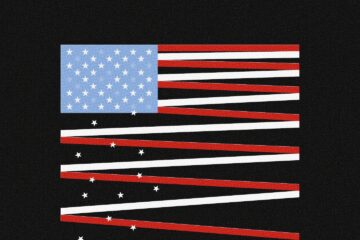 In the course of human events, America has come to agree on one thing: that any modern birthday celebration of itself will involve sizzling hunks of meat, Springsteen in the ears, smoke in the eyes, sulfur in the nostrils, rockets’ red glare.
In the course of human events, America has come to agree on one thing: that any modern birthday celebration of itself will involve sizzling hunks of meat, Springsteen in the ears, smoke in the eyes, sulfur in the nostrils, rockets’ red glare. When Angela received her first shot at the Lombardi Comprehensive Cancer Center in early 2020, Covid-19 was months away. Far from a household name, mRNA vaccines were mostly relegated to lab studies. Yet the jab she received was made of the same technology. A melanoma patient, Angela had multiple malignant moles removed. Alongside an established immune-stimulating drug, the hope was the duo could fight off any residual cancerous cells and slash the chances of relapse. Scientists have long sought cancer vaccines that prevent the pesky cells from growing back. Like those targeting viruses, the vaccines would train the body’s immune system to recognize the cancerous cells and attack and eliminate them before they could grow and spread. Despite decades of research into cancer vaccines, the dream has mostly failed. One reason is that every cancer, in every person, is different. So is each person’s immune system. Tailoring vaccines to neutralize cancers for each patient would not only be expensive, but sometimes impossible due to how long they’d take to develop—time is not on cancer patients’ sides.
When Angela received her first shot at the Lombardi Comprehensive Cancer Center in early 2020, Covid-19 was months away. Far from a household name, mRNA vaccines were mostly relegated to lab studies. Yet the jab she received was made of the same technology. A melanoma patient, Angela had multiple malignant moles removed. Alongside an established immune-stimulating drug, the hope was the duo could fight off any residual cancerous cells and slash the chances of relapse. Scientists have long sought cancer vaccines that prevent the pesky cells from growing back. Like those targeting viruses, the vaccines would train the body’s immune system to recognize the cancerous cells and attack and eliminate them before they could grow and spread. Despite decades of research into cancer vaccines, the dream has mostly failed. One reason is that every cancer, in every person, is different. So is each person’s immune system. Tailoring vaccines to neutralize cancers for each patient would not only be expensive, but sometimes impossible due to how long they’d take to develop—time is not on cancer patients’ sides. Shortly before his death in 1974, R C Zaehner, Spalding Professor of Eastern Religions and Ethics at Oxford, observed that young Westerners who had turned away from Christianity were more often drawn to the religions of India and the Far East than to Islam. ‘The young’, the devoutly Catholic Zaehner stated, ‘are not interested in switching from one dogmatic monotheistic faith to another: hence they are little interested in Islam except when Islam itself is turned upside down and becomes Sufism, which in its developed form is barely distinguishable from Vedanta.’ ‘Indeed,’ he went on, ‘that egregious populariser Idries Shah has gone so far as to claim Zen as a manifestation of Sufism.’ This, Zaehner declared, was historical ‘nonsense’ and academically ‘detestable’.
Shortly before his death in 1974, R C Zaehner, Spalding Professor of Eastern Religions and Ethics at Oxford, observed that young Westerners who had turned away from Christianity were more often drawn to the religions of India and the Far East than to Islam. ‘The young’, the devoutly Catholic Zaehner stated, ‘are not interested in switching from one dogmatic monotheistic faith to another: hence they are little interested in Islam except when Islam itself is turned upside down and becomes Sufism, which in its developed form is barely distinguishable from Vedanta.’ ‘Indeed,’ he went on, ‘that egregious populariser Idries Shah has gone so far as to claim Zen as a manifestation of Sufism.’ This, Zaehner declared, was historical ‘nonsense’ and academically ‘detestable’.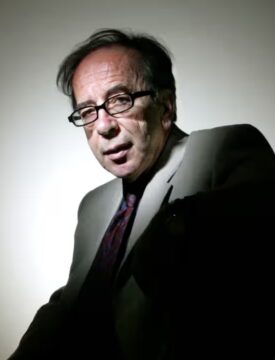 Writing under the shadow of Albanian dictator Enver Hoxha, Kadare examined contemporary society through the lens of allegory and myth in novels including The General of the Dead Army, The Siege and The Palace of Dreams. After fleeing to Paris just months before Albania’s communist government collapsed in 1990, his reputation continued to grow as he kept returning to the region in his fiction. Translated into more than 40 languages, he won a series of awards including the Man Booker International prize.
Writing under the shadow of Albanian dictator Enver Hoxha, Kadare examined contemporary society through the lens of allegory and myth in novels including The General of the Dead Army, The Siege and The Palace of Dreams. After fleeing to Paris just months before Albania’s communist government collapsed in 1990, his reputation continued to grow as he kept returning to the region in his fiction. Translated into more than 40 languages, he won a series of awards including the Man Booker International prize.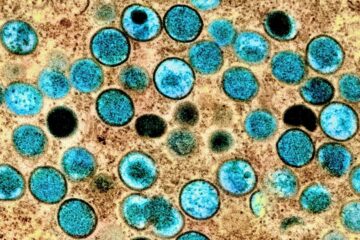 Urgent action is needed to try to contain the spread of a new strain of mpox transmitted mainly by heterosexual sex that has caused more than 1000 cases in the Democratic Republic of the Congo, say health experts dealing with the outbreak. They fear the condition is poised to spread to neighbouring countries and possibly further afield.
Urgent action is needed to try to contain the spread of a new strain of mpox transmitted mainly by heterosexual sex that has caused more than 1000 cases in the Democratic Republic of the Congo, say health experts dealing with the outbreak. They fear the condition is poised to spread to neighbouring countries and possibly further afield.